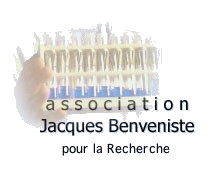La revue « Medical Hypotheses » ne veut plus d’hypothèses médicales
J’ai soumis récemment pour publication un manuscrit concernant l’efficacité des sels de la Mer Morte pour bloquer la dermite séborrhéique décrite pour la première fois en 1887…un traitement peu coûteux avec dix années de recul et avec des centaines de témoignages positifs dans le monde :
http://www.dermiteseborrheique.net/
Maintenant je résumais mon hypothèse concernant l’efficacité des sels de la Mer Morte pour rétablir la communication cellulaire des mastocytes cutanés avec des solutions salines et ionisées.
Evidemment, la revue « Medical Hypotheses » s’imposait alors que j’avais déjà publié trois papiers dans le passé, David Horrobin étant alors l’éditeur. Quelle fut ma surprise de constater qu’il fallait payer maintenant 1650 euros pour publier un papier !
Une réponse de l’éditeur qui est risible et sans fondement
Après 4 semaines, je reçu un premier rejet de l’éditeur me proposant cependant de resoumettre mon papier en créant un paragraphe avec pour titre « Hypothèse » en expliquant brièvement celle-ci qui était dans le premier texte sans ce paragraphe. Quinze jours après, la réponse de l’éditeur fait sourire: en effet, celui-ci rejette à nouveau mon papier sous un prétexte fallacieux
« In my view use of dead sea salts for skin disorders is not a NEW concept. There is already much written both in the social media and in dermatology literature. Dead Sea salts are sold by cosmetic companies. see this write up. »
« À mon avis, l’utilisation des sels de la mer morte pour les troubles cutanés n’est pas un concept NOUVEAU. Il y a déjà beaucoup d’écrits à la fois dans les médias sociaux et dans la littérature dermatologique. Les sels de la mer Morte sont vendus par des sociétés de cosmétiques. voir cet article. »
https://yoursummerskin.com/blogs/news/how-dead-sea-salt-saved-my-skin
Donc les sels de la Mer Morte sont connus pour être utilisés en cosmétique contre la dermite séborrhéique…en citant une observation d’octobre 2016…et alors qu’il n’y a pas un seul papier en dermatologie sur l’efficacité des sels de la Mer Morte contre la dermite séborrhéique (Source PubMed):

La chronologie de mes publications ridiculise « Medical Hypotheses » du groupe Elsevier
Et alors que mes premières observations publiées remontent à 2010 sur un forum consacré aux patients atteints de dermites séborrhéiques ainsi que sur CareVox à partir de 2012: http://www.carevox.fr/medicaments-soins/article/les-sels-de-la-mer-morte-pour-les

Première hypothèse de la communication des mastocytes tissulaires
Mon hypothèse du mécanisme d’action sur la communication des mastocytes tissulaires est originale et personne ne l’a publié : voilà le vrai problème pour l’éditeur de Medical Hypotheses, d’autant plus que je démonte le dogme de la dermite séborrhéique « sans séborrhée » et avec un pityrosporum qui n’en est pas la cause ! Donc, il ne faut surtout pas déranger les dermatologues qui font des millions de consultations et qui prescrivent des crèmes corticoïdes ainsi que des crèmes anti-fongiques contre pityrosporum qui n’en est pas la cause tout en évitant mon protocole peu coûteux !
Mon manuscrit original qui donne de l’urticaire à « Medical Hypotheses »
Aussi, voici mon papier original que je publie sur mon blog et accessible à tout le monde gratuitement et en anglais:
The Author declares that the contents of this article are his own original unpublished findings.
« Dead Sea salts as a new approach for the treatment of seborrheic dermatitis«
Author: Bernard SUDAN
Affiliations: Retired, ex Laboratory Head in Toxicology and Pharmacology (Basel, Switzerland)
Corresponding Author:
E-mail address:
Abstract:
Seborrheic dermatitis is a dermatological syndrome first described in 1887 by Unna at about the time that tobacco smoking was becoming widespread in public places.
While current treatments have still not resolved this skin reaction, a new approach with Dead Sea salts allows us to better understand the probable mechanism of the cells involved in this dermatological syndrome.
Following observations and differences between salt water and pure water on the development of facial seborrheic dermatitis, we can hypothesize that the salt solutions have probably an important influence on cellular communication of mast cells, the potentially involved cells in the aetiology of seborrheic dermatitis.
Keywords: Seborrheic dermatitis; sebaceous glands; mast cells; histamine; hapten nicotine; allergen tobacco; Dead Sea salts; ketoconazole; lithium succinate; sodium cromoglycate; sodium chloride; conductivity; cellular communication; hypothesis; Malassezia
Introduction: The sebaceous glands were since 1887 only involved because of the appearance of this dermatitis [1] in this area of the face where these glands are in greater number. This medical dogma has never been challenged throughout the twentieth century despite the presence of fungi involved in lesions of seborrheic dermatitis and identified by Malassez.
All the therapeutic strategies used since that time have been ineffective while the precise aetiology of this skin reaction was not resolved.
Methods: History of research
Nicotine as a hapten in seborrheic dermatitis (1978)
My original research to elucidate the aetiology of my familial facial dermatitis which resembles seborrheic dermatitis [2-5] involving the allergen tobacco and the hapten nicotine of second-hand tobacco smoke was confirmed by three international and independent laboratories (Jacques Benveniste, INSERM, Paris, France, Alain L. de Weck, Bern, Switzerland and Samuel B. Lehrer, New Orleans, USA).
While my father smoked a cigar every Sunday with a reaction in his face, I resolved to begin my research in early 1975 by identifying the tobacco allergen by applying a patch test containing a solution of cigar leaves to my forearm with a very positive reaction after 30 minutes. A week later, an intradermal test with allergenic extracts of tobacco leaves (dilution 1/100,000) was very positive after 30 minutes.
In addition, Karrenberg described in 1928 the case of a person with a facial dermatitis who worked in the tobacco industry and following contact with tobacco leaves, the application of a drop of nicotine diluted to one millionth had caused anaphylactic shock [6].
Seborrheic dermatitis and sodium cromoglycate (1980)
A new approach for the local treatment of seborrheic dermatitis using a sodium cromoglycate efficient ointment was first published 40 years ago [7] showing a possible involvement of tissue mast cells.
Also it is necessary to locate the sebaceous glands with their cellular environment to consider the involvement of other cells at the origin of erythematous reactions of the skin.
In his book “Allergy at the dawn of the third millennium” in 1995 [8], the immunologist Claude Molina well described the tissue mast cells around the sebaceous glands thus confirming my first work from 1978 involving these cells at the origin of my familial “seborrheic” dermatitis. In addition all members of my family suffer from several allergic diseases (eg allergies to dust mites, povidone iodine, antibiotics as pristinamycin and virginiamycin, oxprenolol).
Seborrheic dermatitis and sebum level (1982)
Since the first description of seborrheic dermatitis, it took almost a century to prove that the sebum level was the same in both groups of patients with and without seborrheic dermatitis [9].
Ketoconazole with anti-allergic properties (1986)
The local treatments offered by dermatologists are only based on anti-inflammatory molecules such as corticosteroids used too frequently for allergic reactions with a potential addiction or ketoconazole as anti-fungal molecule with anti-leukotriene and therefore anti-allergic properties as clearly demonstrated in 1986 [10].
Pityrosporum and lithium succinate (1987)
The involvement of pityrosporum, a saprophyte of the skin present on all inflamed skin does not hold because solutions based on lithium succinate, a lithium salt have no activity [11] against this fungus showing that the origin of seborrheic dermatitis is probably allergic. In addition, one wonders how pityrosporum could « jump » from the face to the mid-thoracic area, another site of seborrheic dermatitis.
Nicotine side-effects in plants, transdermal patches and vaccines
Nicotine found in plants such as horsetails [12] or transdermal patches [13,14] can also cause dermatological reactions. In addition, the development of an anti-nicotine vaccine has ceased following several cases of anaphylactic shock [15] with specially one of the following description: “One subject in the Phase IIb trial of the NicVAX vaccine had an allergic anaphylactic reaction that resolved with medication”
Histamine in the skin of seborrheic dermatitis (2011)
Researchers have linked the presence of histamine in the skin of seborrheic dermatitis in connection with itching in 2011 [16] also supporting my allergic theory and research with involvement of tissue mast cells.
No effect of ketoconazole against pityrosporum (2016)
A recent publication in the British Journal of Dermatology by Brazilian researchers demonstrate the lack of efficacy of ketoconazole against pityrosporum confirming that this fungus is only a saprophyte on the inflamed skin of seborrheic dermatitis [17].
Nicotine prick tests and seborrheic dermatitis (2018)
More recently in 2018 at the faculty of Sarajevo a patient with seborrheic dermatitis reacted strongly by prick-test with nicotine while the investigators looked for a correlation between the different sources of sensitization and the individual predispositions of several patients [18].
Another view for mast cells and role for cutaneous Malassezia (2021)
Recently, multiple roles of cutaneous Malassezia in health and disease as commensal, pathogen, and protector habe been discussed [19] and additionnaly the role of mast cells as a key factor for seborrheic dermatitis and atopic dermatitis has been suggested.
Observations and results
Dead Sea salts as a potential new approach for seborrheic dermatitis
In March 2010, I had the opportunity to test a dermatological soap and cream based on Dead Sea salts because it has long been known that patients with psoriasis see their skin reaction greatly improved in a Dead Sea spa treatment. After a few days of using these dermatological soap and cream, I was surprised to see that my episodic reaction had disappeared. I only communicated this positive information with two months of hindsight on one website dedicated to people with seborrheic dermatitis and later on a online health site [20].
With more than ten years of hindsight, we now have hundreds of testimonials from people with seborrheic dermatitis and psoriasis (additionally some other dermatological diseases as dyshidrosis or atopic dermatitis) who have had a dramatic improvement in their skin reaction as summarized in my book “Towards a solution for seborrheic dermatitis” [21].
In the meantime, I have been concerned to find out why this mixture of Dead Sea salts and water could have such an effect on our skin. I had noticed in the 70s that misting pure water on my face only made my dermatitis worse and I focused on the difference between pure water and salt water.
Everyone knows that whales or dolphins communicate by infrasound or low frequencies in salt water and not in pure water. For example baleen whales mainly emit infrasound (frequencies below 20Hz) which are inaudible to humans. These sounds travel very quickly in salt water and can be heard by other baleens whales hundreds of miles away!
So I focused on the cellular communication of tissue mast cells, these cells involved in this allergic facial reaction to the presence of an environmental hapten. I got myself a conductivity meter in order to measure the different conductivities of pure water and salt water solutions including the dermatological soap / water mixture with very logical results: the conductivity of pure water is zero therefore the current does not pass and the conductivity of the salt water is high allowing current to pass.
Discussion and Hypothesis
Following these observations and differences between salt water and pure water on the development of facial seborrheic dermatitis, we can hypothesize that the salt solutions have probably an important influence on cellular communication of mast cells, the potentially involved cells in the aetiology of seborrheic dermatitis. In addition it is interesting to note that by focusing on mast cells with saline solutions for a new strategy, we can hope for significant progress in the treatment of seborrheic dermatitis and probably other dermatological syndromes such as psoriasis and atopic dermatitis showing that an hypothesis based on observations confirmed by a lot of patients could lead to a major help for all other patients.
Conclusion
So we find that the use of Dead Sea salts in soap and cream can provide an effective solution to seborrheic dermatitis reactions without noticeable side effects when using this natural solution. This approach confirms the possible involvement of tissue mast cells with the release of histamine at the origin of this dermatological syndrome and deserves further investigations in dermatology to replace the side effects of current therapies such as those of local corticosteroids for example.
In conclusion, we can note the similarity of efficiency of sodium cromoglycate, sodium chloride of Dead Sea salts and lithium gluconate or succinate, a lithium salt thus showing a probable action at the cellular level of these salts on the degranulation of tissue mast cells in presence of an allergen or an hapten.
Potential conflicts of interest: The authors declare no conflicts of interest.
References:
[1] Unna PG. Das seborrheische Ekzem. Monatsheft für praktische Dermatologie 1887;6:827-846.
[2] Sudan BJL. Contribution à l’étude du rôle allergénique de la fumée de tabac. Le tabac : un allergène, la nicotine: un haptène, Allergie et Immunologie 1978;10:36-54.
[3] Sudan BJL, Sterboul J. Sensibilisation tabagique. Le tabac : un allergène, la nicotine: un haptène. Diagnostic par le test de dégranulation des basophiles humains. Nouv. Presse Méd. 1979;8:3563. [PMID: 545289]
[4] Sudan BJL, Sterboul J. Nicotine : an hapten. Brit. J. Dermatol. 1981;104:349-50. [PMID: 7213568]
[5] Sudan BJL, Brouillard C, Sterboul J, Sainte-Laudy J. Nicotine as a hapten in seborrhoeic dermatitis. Contact Dermatitis 1984; 11:196-7. [PMID: 6238797]
[6] Karrenberg CL. Zur Kasuistik der phytogenen Berufsdermatosen: Hauterkrankung durch Tabakblätter. Dermatol. Z. 1928; 52:30–9.
[7] Sudan BJL, Sterboul J. Dermite séborrhéique et cromoglycate de sodium. Cutis (Paris) 1980; 4:81-85.
[8] Molina C. L’allergie à l’aube du troisième millénaire. John Libbey Eurotext 1995; page 77 https://books.google.fr/books?id=FsoIZ_ZSNAYC&pg=PA77&lpg=PA77&dq=glandes+s%C3%A9bac%C3%A9es+mastocytes&source=bl&ots=ttzjefngy6&sig=G_6RNPulK9y0jsvGCh1ZhiTfMtA&hl=fr&sa=X&ved=0ahUKEwibpayN1-_RAhWJuhoKHUs1BrQQ6AEISjAH#v=onepage&q=glandes%20s%C3%A9bac%C3%A9es%20mastocytes&f=false
[9] Burton JL, Pye RJ. Seborrhoea is not a feature of seborrhoeic dermatitis. Br Med J (Clin Res Ed) 1983; 286:1169-70. [PMID: 6220754]
[10] Sudan BJL. Ketoconazole, leukotrienes, PAF-acether and nicotine as a hapten : the possible aetiology of seborrheic dermatitis. Med. Hypotheses 1987; 23:33-38. [PMID: 2886885]
[11] Boyle J, Burton JL, Faergemann J. Use of topical lithium succinate for seborrheic dermatitis. Br. Med. J. (Clin. Res. Ed.) 1986; 292:28
[12] Sudan BJL. Seborrhoeic dermatitis induced by nicotine of horsetails (Equisetum arvense L.). Contact Dermatitis 1985; 13:201-2. [PMID: 2932297]
[13] Sudan BJL. Transdermal nicotine and placebo. The Lancet 1989; 1:334. [PMID: 2563493]
[14] Sudan BJL, Sainte-Laudy J. Nicotine and Immunology. In: Drugs of Abuse and Immune Function. Watson RR ed., CRC Press; 1990. p.113-23.
[15] Gorelick DA. Pharmacokinetic approaches to treatment of drug addiction. Expert Rev Clin Pharmacol 2008;1:277-90. [PMID: 24422652]
[16] Kerr K, Schwartz JR, Filloon T, et al. Scalp stratum corneum histamine levels: novel sampling method reveals association with itch resolution in dandruff/seborrhoeic dermatitis treatment. Acta Derm Venereol. 2011; 91:404-8. [PMID: 21336476]
[17] Zani MB, Soares RC, Arruda ACBB, de Arruda LHF, Paulino LC. Ketoconazole does not decrease fungal amount in patients with seborrhoeic dermatitis, Brit J Dermatol. 2016;175:417-21. [PMID: 26920094]
[18] Sušić A, Klepo L, Islamagić E, et al. Nicotine allergy in correlation with different sources and individual predispositions. Alban Med J. 2018;1:13-19.
[19] Vijaya Chandra SH, Srinivas R, Dawson TL Jr, Common JE. Cutaneous Malassezia: Commensal, Pathogen, or Protector? Front Cell Infect Microbiol. 2021 Jan 26;10:614446. [PMID: 33575223]
[20] Sudan Bernard. Les sels de la Mer Morte pour les maladies de la peau. CareVox. Dec. 26, 2012 : http://www.carevox.fr/medicaments-soins/article/les-sels-de-la-mer-morte-pour-les
[21] Sudan Bernard. Vers une solution de la dermite séborrhéique. Lulu ed.;2017:70 pages. https://www.lulu.com/en/en/shop/bernard-sudan/vers-une-solution-de-la-dermite-s%C3%A9borrh%C3%A9ique/paperback/product-1kmyk492.html?page=1&pageSize=4
Ex Chef de laboratoire en toxicologie et pharmacologie LabHead Ciba-Geigy, CIBA, Novartis, Bâle, 1975-2006 Research Nicotine as a hapten in seborrheic dermatitis, The Lancet, British Medical Journal, British Journal of Dermatology, Food and Chemical Toxicology, "Nicotine and Immunology" in Drugs of Abuse and Immune Function Ronald R. Watson ed.
https://www.researchgate.net/profile/Bernard-Sudan
https://www.dermiteseborrheique.net
https://www.bernardsudan.net/
https://www.youtube.com/channel/UCeQB3vdsKeZU-E0zORZr0vQ?view_as=subscriber
AIMSIB: Dermatite Séborrhéique Origine et traitement
AIMSIB: Le magnésium des sels de la mer morte en dermatologie




